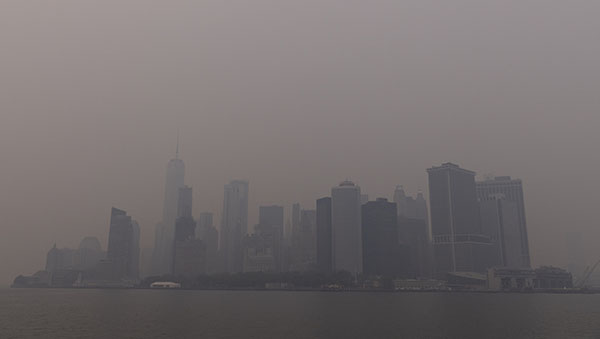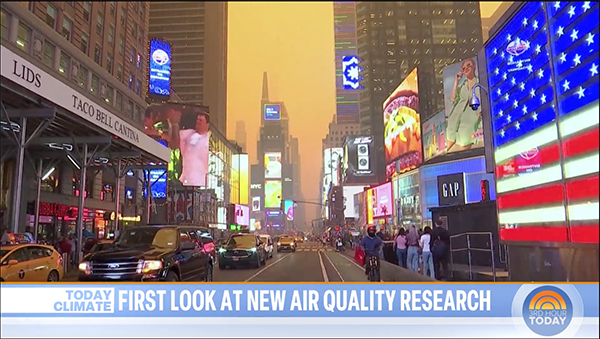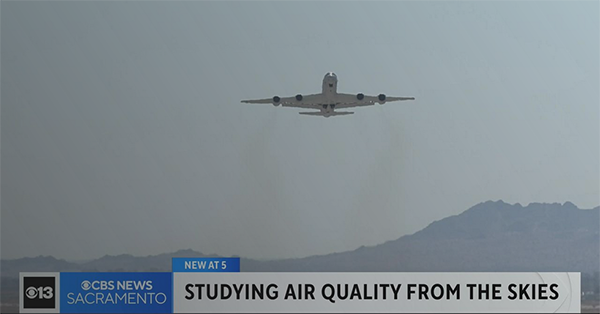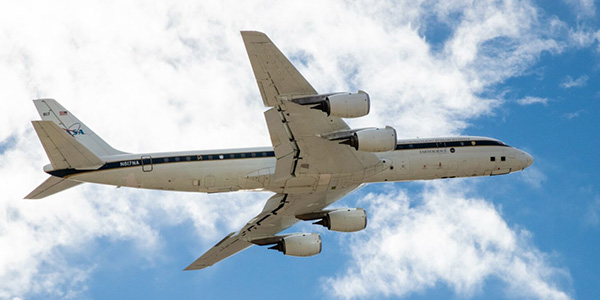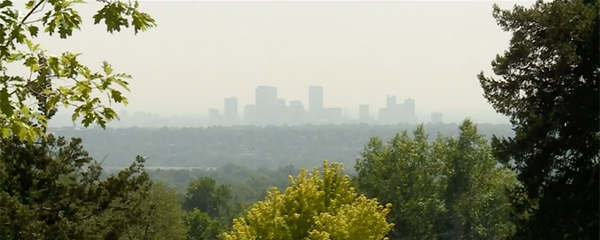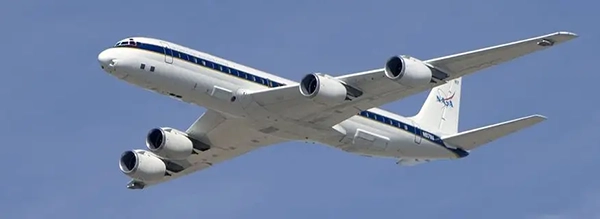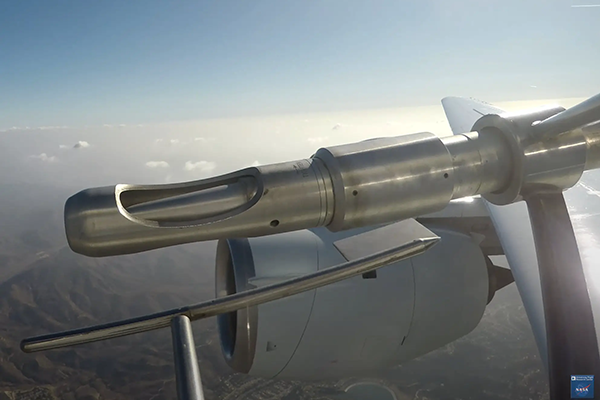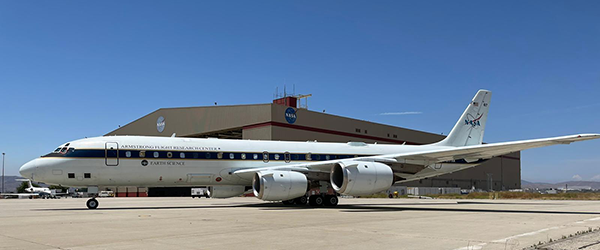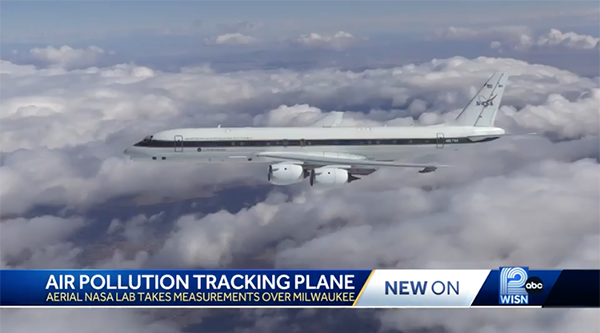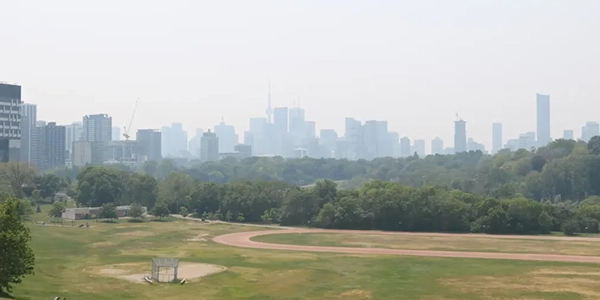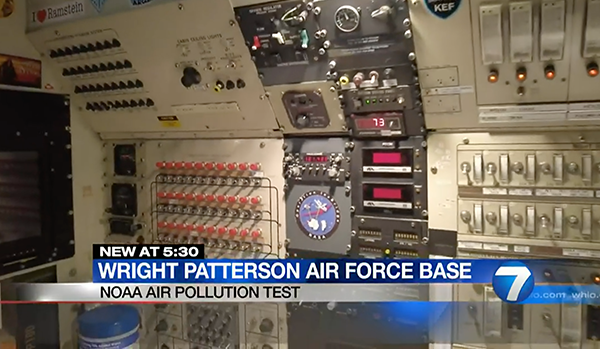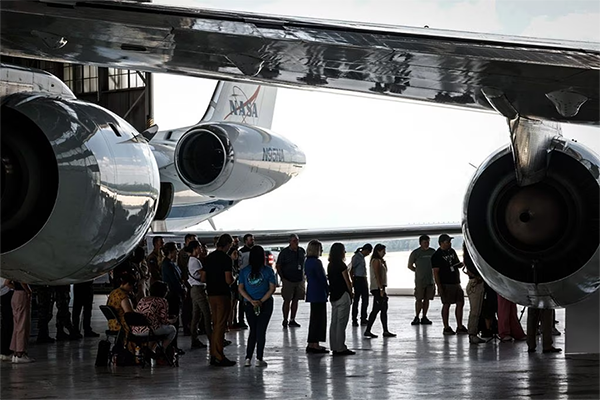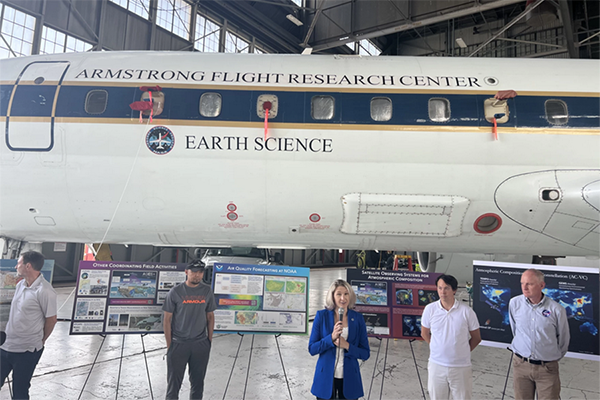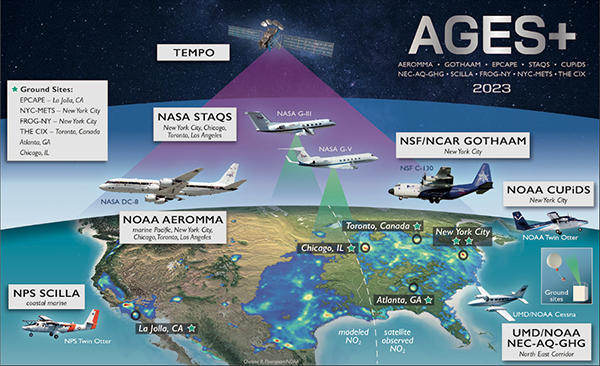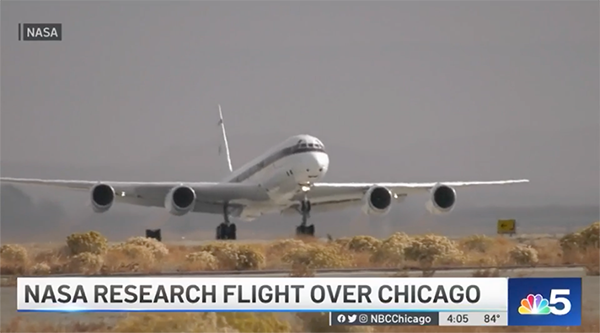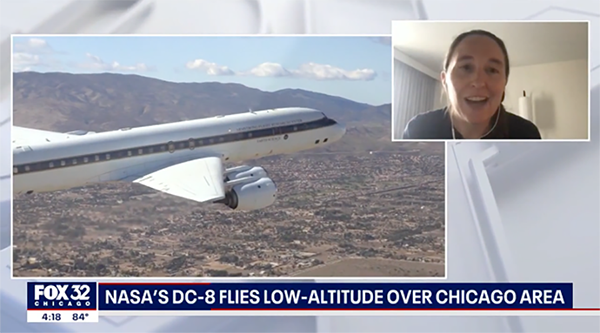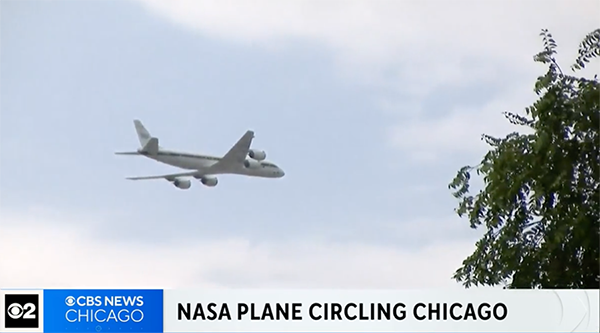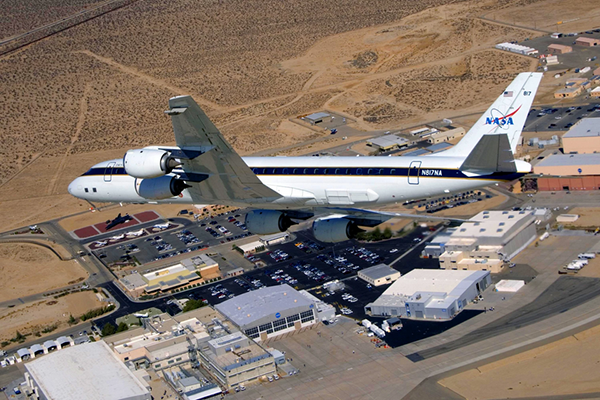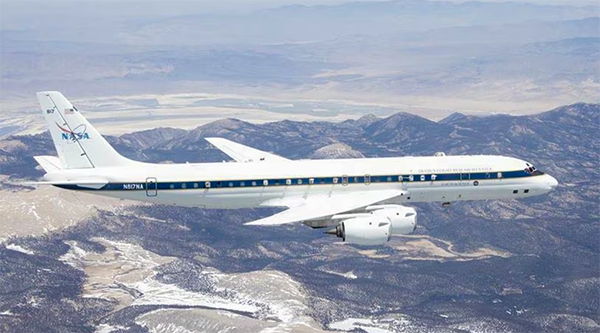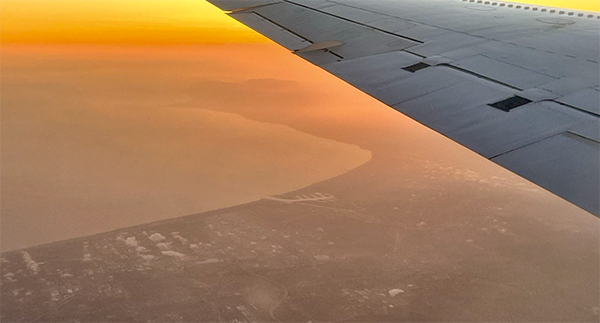US Air Pollution Progress Is Slowing. Researchers Are Looking at Cities
Bloomberg, 13 October 2023
Air pollution is falling, but the declines have started to lag. To examine how pollution varies across communities, a new project is pursuing more detailed measurements. Read More
Researchers tackle air quality from the streets of New York
NOAA CSL News, 13 October 2023
A summer spent measuring air pollutants at street level promises to show how air quality varies among New York City neighborhoods. Read More
How scientists are hitting the streets to collect air quality data
NBC Today Show, 13 September 2023
A dream team of scientists from around the world have come together to study air quality and pollution data from space all the way down to the streets of New York City for groundbreaking research. TODAY's Al Roker shares a closer look. Read More
"Flying science lab" cruised across Central Valley. Here's what it was tracking.
CBS News Sacramento, 28 August 2023
Those in the Central Valley may have been greeted with an unusual sight last week as a large plane circled the region, flying much lower than usual but for a good reason. Scientists from NASA and NOAA launched a summer mission to track and study air quality from the skies. Read More
NASA DC-8 conducts low-altitude research over Southern California, yet to pass over SCV
The Signal, 23 August 2023
The NASA Armstrong Flight Research Center's DC-8 aircraft flew over the Los Angeles urban area Wednesday as part of a collaborative scientific research mission with the National Oceanic and Atmospheric Administration called AEROMMA. Read More
York leads atmospheric scientists in analyzing city's air pollution
Education News Canada (ENC), 16 August 2023
As Toronto gets hotter, muggier and wildfire smoke increasingly wafts through the atmosphere, researchers at York University are leading a team of atmospheric scientists in testing the city's air pollution from their rooftop Air Quality Research Station for six weeks this summer. Read More
Study shows how personal products are polluting the air
9 News Denver, 14 August 2023
We see ozone action days, when air quality is low. A new study shows one reason for that is sitting right in your bathroom cabinet. Read More
Have you seen a plane flying low over Connecticut?
News 8 New Haven, 10 August 2023
Have you seen a plane flying low along the Connecticut coastline? It's NASA - but it's not heading to the Moon. The plane, NASA DC-8, is touted as "the world's largest flying chemistry laboratory." It's part of the AEROMMA project, which is looking into air pollution above the New York City area. Read More
NASA's DC-8 aircraft flies low over Oakville collecting air quality data
Oakville News, 10 August 2023
As Toronto gets hotter, muggier and wildfire smoke increasingly wafts through the atmosphere, researchers at York University are leading a team of atmospheric scientists in testing the city's air pollution from their rooftop Air Quality Research Station for six weeks this summer. Read More
NASA to resume Chicago flyovers Tuesday as part of research project
Fox 32 Chicago, 8 August 2023
Scientists with NASA's Armstrong Flight Research Center will once again fly over the skies of Chicago Tuesday to conduct a research project on air quality. Read More
NASA Research Plane Flys Over Milwaukee
WISN 12 News, 6 August 2023
A low-flying plane spent time over Southeast Wisconsin earlier this week. It was collecting data as part of NASA's AEROMMA (Atmospheric Emissions and Reactions Observed from Megacities To Marine Areas) research project. Read More
York University scientists are studying Toronto's air quality amid rise in wildfire smoke
Toronto News Station, 5 August 2023
A team of York University researchers are studying Toronto's air quality this summer as part of a new project aimed at discovering what's polluting the city's air. Read More
NASA's Flying Chemical Lab Tests Urban Air Pollution
Government Technology, 4 August 2023
Scientists with the NOAA and NASA showed off a NASA DC-8 airplane parked at Wright-Patterson Air Force Base that is said to be the world's largest flying chemistry laboratory. Read More
Look! Up in the sky! NASA, NOAA scientists in flying lab are checking air quality
WHIO TV 7, 3 August 2023
Scientists are aboard a DC-8 that has been converted into a flying lab, on a mission to track pollution and air quality. The research being done by NASA and NOAA is a first of its kind. Read More
Flying NASA 'chemical lab' calls Wright-Patt home while studying urban pollution
Dayton Daily News, 3 August 2023
'Unprecedented' NOAA, NASA study examines how big city pollution has changed. Scientists with NOAA and NASA showed off a NASA DC-8 airplane parked at Wright-Patterson Air Force Base on Thursday that is said to be "the world's largest flying chemistry laboratory." Read More
'Unprecedented' air pollution research campaign launches at Wright Patt
Ohio Public Radio WYSO, 3 August 2023
Officials from NASA and NOAA, in front of the NASA DC-8 research aircraft in a hangar at Wright Patterson Air Force Base, said a new coordinated research campaign will investigate how air pollution sources have shifted over recent decades. Read More
Persistent Pollution Problems Over Decades Spark Coordinated NASA, NOAA Research
The Messenger, 3 August 2023
Satellite, aircraft and ground-based measurements aim to tackle ozone and particulate matter that remain dangerous problems in many areas. Read More
Boulder's NOAA leads international blitz of research as battle against air pollution escalates
The Colorado Sun, 3 August 2023
Airplanes, SUVs and backpack sensors fan out with researchers from three countries in the fight against ozone and particulate emissions. Read More
Yale Joins NOAA, NASA for Comprehensive Air Quality Research Campaign
Yale News, 3 August 2023
Researchers from NOAA, NASA, Yale Engineering and 20 other universities from three countries are deploying state-of-the-art instruments in multiple, coordinated research campaigns this month to investigate how air pollution sources have shifted over recent decades. Read More
NOAA, NASA spearheading a massive air quality research campaign this summer
NOAA Press Release, 3 August 2023
Scientists from NOAA, NASA and 21 universities from three countries are deploying state-of-the-art instruments in multiple, coordinated research campaigns this month to investigate how air pollution sources have shifted over recent decades. Read More
What's that noise? NASA aircraft to fly over Chicago area once again Wednesday
NBC Chicago, 2 August 2023
Known as the "largest flying science laboratory in the world," the DC-8 aircraft is being used as part of a partnership between NASA and NOAA. Read More
NASA conducts low-altitude flight over Chicago area Wednesday
Fox 32 Chicago, 2 August 2023
NASA's DC-8 flew over Chicago and the city's surrounding areas for a research project on Wednesday. Read More
NASA research jet flies low over Chicago to collect data on emissions
CBS News Chicago, 1 August 2023
Chicago residents may have seen – or heard – the huge plane circling in and around the city on Tuesday. It was flying much lower than usual and for good reason. Read More
NASA Craft Spotted Over Guilford [Connecticut]
Shore Publishing, 31 July 2023
An unidentified low-lying aircraft was spotted over sections of Guilford on July 26. According to NASA, the craft was a four-engine DC-8 that was participating in research missions in partnership with NOAA to study urban air quality. Read More
NASA-led Mission to Map Air Pollution in 3D Over Megacities
NASA Press Release, 27 July 2023
This summer, as wildfire smoke blankets large swaths of North America and heat-stoked summer haze reaches its seasonal peak, NASA and its partners are deploying several new tools to observe air quality and pollution from the street to the stratosphere. Read More
Did you see a low-flying jet in CT this week? That was likely NASA, the agency says
Connecticut Public Radio, 27 July 2023
A large low-flying jet was spotted roaring over Connecticut this week. The four-engine DC-8 was moving Wednesday at speeds of around 250 miles per hour and at the relatively low altitude of only a few thousand feet. Read More
A low-flying NASA plane has been seen flying over CT. It's responsible for sniffing the air.
Connecticut Post, 27 July 2023
A "low and slow" flying plane caught the attention of some residents in Connecticut and New York this week and those with good enough vision might have noticed the NASA logo. The aircraft was the NASA DC-8 plane, considered “the world's largest flying chemistry laboratory," according to NASA. Read More
NASA DC-8, 'world's largest flying lab,' lands at Wright-Patterson to study 'mega-city' air pollution
Dayton Daily News, 25 July 2023
A NASA DC-8 airplane, said to be "the world's largest flying chemistry laboratory," landed at Wright-Patterson Air Force Monday as the flagship of a federal government study to examine air quality above mega-cities in coming days. Read More
Researchers fly out over the Pacific to investigate cloud-forming marine sulfur
NOAA CSL News, 29 June 2023
Those fluffy, white clouds over the ocean don't just make for pretty pictures – they also play a big role in moderating global climate by controlling how much sunlight reaches the sea surface below them. Read More
Instrument Installation and Research Flights Underway for Coordinated Nationwide Summer Field Campaigns
NOAA CSL News, 21 June 2023
Researchers from NOAA CSL and CIRES, along with numerous federal and academic partners, have begun a coordinated set of nationwide, atmospheric field campaigns that will span the summer of 2023. Read More
